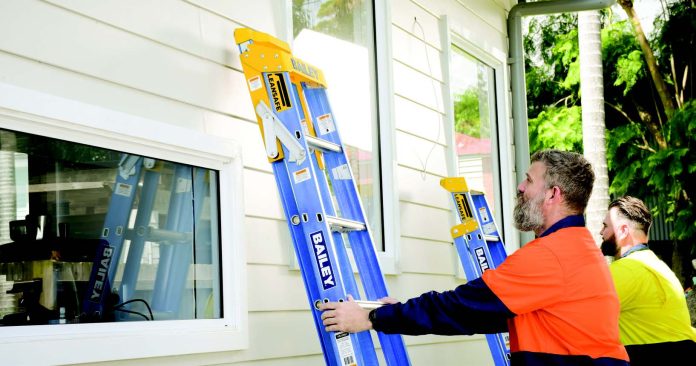Height safety is vitally important across all industries. After all, you don’t have t be very high off the ground before a fall is potentially fatal. This is clear when working at heights on a building site or undertaking a roofing job. The surprising thing is that height safety can be an issue even when working at ground level. If there’s a deep pit nearby, the same safety procedures are required to be followed. The term ‘height safety’ refers to anywhere there’s a risk of falling, including falling into something.
“Safe Work Australia produces codes of practice for high-risk tasks in the workplace,” says Martyn Temple, product specialist at Werner Co Australia. “The company manufactures and distributes a wide range of safety access products, fall protection and vehicle storage systems.
It’s also Australia’s largest distributer of ladders under the Bailey and Werner brands. Safe Work Australia’s ‘Codes of Practice’ publications cover the best work practices for workers at a high risk of injury. These include working at heights, along with other risks such as noise levels, asbestos removal, and working with chemicals.”
CLIMBING HIGH
One of the most commonly used tools when working at heights are ladders—from home DIYers to huge construction sites. The user might only be a metre or two off the ground but a fall can still cause significant injury.
It’s important to be aware that when working from a step ladder, it is more stable in one direction. Workers should face the ladder while working, not stand on it and twist to work to the side. This can cause the ladder to topple over.
“The majority of all ladder accidents are from people overreaching to the side,” says Temple. “When working on a ladder, your centre of mass is higher so it’s easy to overbalance. Once this happens, the instinctive reaction is to throw your weight in the other direction causing the ladder to tip over. The force on the ladder is then transferred to one leg that can cause it to buckle. After the accident, a common assumption is that the ladder collapsed. The reality is that overreaching causes one side to lift off the ground, putting a dynamic load on one point.”
It’s imperative to ensure your ladder is in good order. People commonly damage their ladders but keep using them. Unfortunately, once damaged, it will eventually break with further use.
PROTECTION FROM FALLING
Fall protection is an all-encompassing term for when a system is put in place to protect a person working at heights. It includes full body harnesses, rope grabs, anchors and guardrails. It also includes edge protection that stops people falling from a roof.
“All identified risks at work should have a hierarchy of control applied to reduce the level of risk,” says Temple. “In order of importance, they are: eliminate the hazard, substitute the risk, use engineering controls, use administrative controls, utilise PPE. You should only move to a lower level when it’s not practical to use a higher order control.”
All safety equipment clearly states to inspect the equipment with each use. The onus is on the user to take responsibility for their own safety. This commonsense approach is essential to reduce injury.
“For example, there’s no point in using a harness that has been stained with chemical detergents or solvents,” says Temple. “It can create weak points that may tear apart if you fall. If you’re using other people’s ladders, you need to make sure everything’s safe. A thorough
inspection can save you from pain, injury, financial loss and even death.”
END COMPLACENCY
Workers in construction should undergo White Card Training covering all aspects of safety onsite. The program was introduced to ensure everyone has an understanding of safe work practices.
Individual construction sites are also required to do their own induction on the basic safety concerns for that site. The key thing when working at heights is not to be complacent.
“People who only use a ladder occasionally are very careful,” says Temple. “People such as riggers are aware of the risk because they’re highly trained. Many tradies tend to become complacent because they use ladders every day and have never had an injury. They simply forget that when working at heights, a fall can be disastrous, particularly if there’s a lot of brickwork and steelwork around. Falling onto
something in that environment is the most common cause of serious injuries and death. Even in domestic situations, there are hazards such as bench corners and furniture. Don’t be complacent—ever.”






